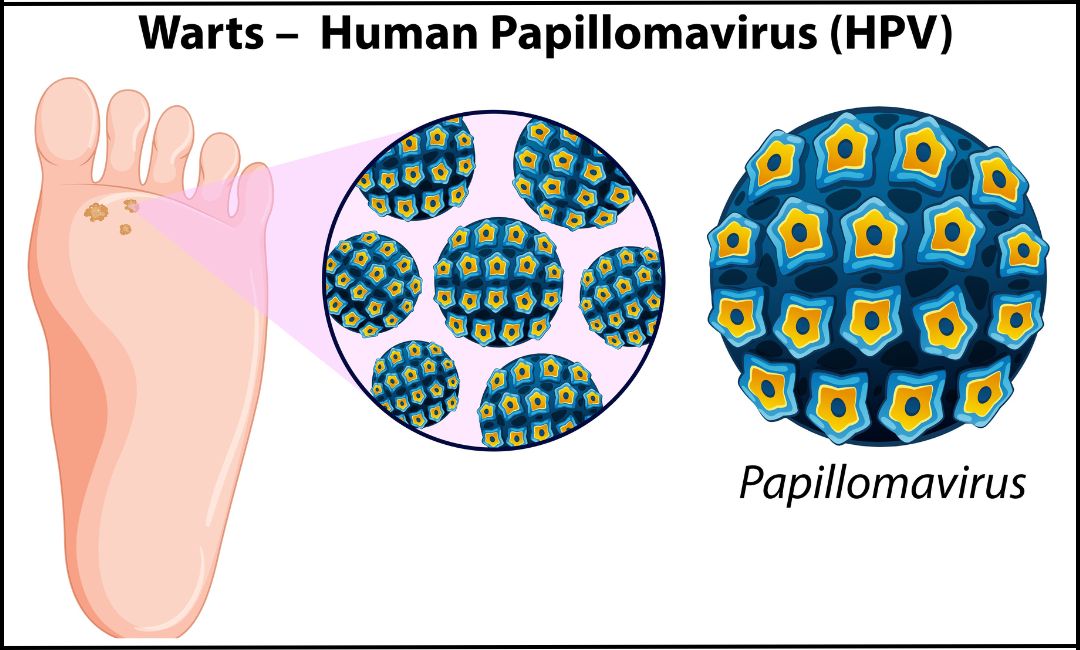The HPV infection results in the growth of skin or mucous membrane growths (warts). In females, HPV infections are associated with cervical cancer.
Understanding Human Papillomavirus (HPV) is crucial for individuals to protect themselves and make informed decisions about their health. HPV is a common sexually transmitted infection that affects both men and women.
Symptoms of Human Papillomavirus
Recognizing the symptoms of HPV is essential for early detection and treatment. While many people may not experience any noticeable signs, some individuals may develop genital warts or experience abnormal changes in cervical cells. It is important to note that HPV can also be present without any visible symptoms, making regular screenings and check-ups vital.
If you suspect you have HPV or are concerned about your risk, it is important to consult an Infectious Specialist for proper evaluation and guidance.
Transmission of Human Papillomavirus
The primary cause of HPV transmission is through sexual contact with an infected individual. The virus can be spread through vaginal, anal, or oral sex. Additionally, direct skin-to-skin contact in the genital area can also lead to transmission. Understanding how HPV spreads allows individuals to take preventive measures such as practicing safe sex and getting vaccinated.
Complications of Human Papillomavirus
Although most cases of HPV resolve on their own without causing any long-term complications, certain strains of the virus can lead to more serious health issues. Persistent infections with high-risk types of HPV can increase the risk of developing cervical cancer in women. In men, it can lead to penile or anal cancer. Therefore, regular screenings and vaccinations are crucial for reducing these risks.
Prevention of Human Papillomavirus
Preventing Human Papillomavirus (HPV) is of utmost importance in reducing the risk of developing cervical cancer and other related health complications. Fortunately, there are effective strategies available to combat this common sexually transmitted infection (STI).
One of the most significant advancements in HPV prevention is the development of the HPV vaccine. This vaccine provides protection against the most common types of HPV that can lead to cervical cancer and other diseases. It is recommended for both males and females, typically administered during adolescence or early adulthood.
In addition to vaccination, regular screenings and testing for HPV play a crucial role in prevention efforts. Routine screenings such as Pap tests or newer methods like HPV DNA testing can help detect any abnormalities early on and ensure timely intervention.
Education and awareness campaigns also play a vital role in preventing HPV transmission. Educating individuals about safe sexual practices, including consistent condom use and limiting sexual partners, can significantly reduce the risk of contracting or spreading the virus.

By combining vaccination, regular screenings, and promoting safe sexual practices through education, we can make significant strides in preventing Human Papillomavirus infections. Together, we can protect individuals from the potential harms associated with this prevalent STI and contribute to overall public health.
Having a comprehensive understanding of Human Papillomavirus - its symptoms, causes, and potential complications - individuals are empowered to make informed decisions about their sexual health. Education plays a pivotal role in preventing transmission and promoting early detection and treatment options for those affected by this prevalent infection.
If you suspect you have HPV or are concerned about your risk, it is important to consult an Infectious Specialist for proper evaluation and guidance.
Related Blog Articles:
1. HPV Vaccine: A Powerful Tool in Preventing Cervical Cancer
.webp)






